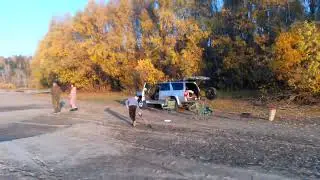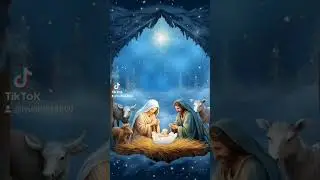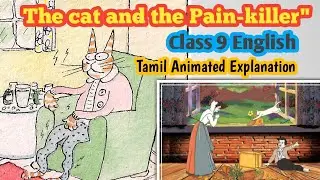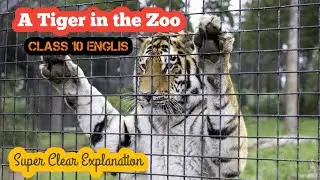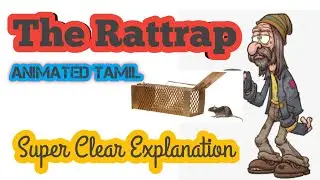A Tiger In The Zoo / Class 10 / CBSE / English Abaca
A Tiger in the Zoo Summary
The poem written by Leslie Norris explains the agony and helplessness of a caged tiger that lives in a zoo. The poet explains what his life could be if he had been a free animal. The poet has tried to explain about the condition of animals that are caged by human beings for their own fun.
The poem begins with a description of a tiger that is very beautiful and is walking in his little cage. He has beautiful stripes on his skin and has velvet like soft paws. But the tiger is not happy and is quite angry about being confined in the cage. The poet says that if the tiger was not confined to the zoo cage, he would have been hiding himself behind the long grass near some water body, in order to catch its prey that is the deer. Also, he would have terrorised the residents of the villages around the forest area. But the reality is totally opposite to this. He was confined in a cage which was made up of strong building material and he was helpless there. He could not show his power to the visitors, therefore, never tried to terrorize them. The tiger is described as being powerless and agonized by the poet. He says that during night also he is alone, hearing the voice of the patrolling vehicles of police and looking at the stars. The cage life has totally changed the tiger’s personality. The poet is trying to say that the animal which is famous for its fearlessness and freedom is confined and sad due to the human beings who want to derive pleasure by looking at him in the zoo cage.
Top
Theme of the Poem
The comparison between wild animals’ freedom and their lives in captivity is the theme of Leslie Norris’ poem “A Tiger at the Zoo.” The poem examines the feelings of loss and imprisonment that a tiger in a zoo experiences, as well as the contrast between the animal’s wild, untamed soul and the constrained life it is forced to live in captivity.A Tiger in the Zoo Poem Explanation
Poem
He stalks in his vivid stripes
The few steps of his cage,
On pads of velvet quiet,
In his quiet rage.
Word Meaning
Stalks: follows
Vivid: bright colored
Pads: paws of tiger
Rage: anger
Explanation of the poem passage above – Here the poet says that the tiger that is confined in the zoo moves around in the cage under his bright coloured skin. He further says that the tiger can take only a few steps because the cage is small and it is not easy to move in it. One cannot hear his footsteps because he has very soft feet, like velvet because of which there is no sound of the tiger’s footsteps. The tiger tries to control his anger by quietly walking in the limited area of his cage. He is angry because he is not free.
Literary Devices
Rhyme scheme: abcb (cage-rage)
Personification: The tiger is personified because the poet refers him as ‘he’.
Metaphor: Tiger’s paws are compared with velvet (pads of velvet)
Enjambment: Sentence is continuing to next line without any punctuation mark.
Imagery: poet tries to create an image about the tiger (He stalks in his vivid stripes The few steps of his cage)
Consonance: use of ‘s’ sound (stalks, his, stripes)
Assonance: use of vowel sound ‘I’ (in his vivid stripes)
Oxymoron: use of adjectives opposite in meaning (quiet rage)
deer
Poem
He should be lurking in shadow,
Sliding through long grass
Near the water hole
Where plump deer pass.
Word Meaning
Lurking: To be hidden as to wait for your prey
Explanation of the poem passage above – The poet says that if this tiger was free, he would have hid himself behind the long grass near the water bodies so that he could easily catch a deer in order to have it as its food. Basically, the poet wants to say that the actual life of a tiger is to live in jungle where he could catch his prey and eat it but the tiger in the cage can not do so.
class 10 english score full marks
Literary Devices/ Poetic Devices
Rhyme: rhyme scheme is abcb (grass-pass)
Enjambment: Line continues to next line without punctuation marks. (Sliding through….deer pass)
Alliteration: use of sound ‘p’ at the start of two words (plump pass)
Imagery: The poet has tries to create an image of tiger’s activities (lurking in shadow).
tiger wuth white fangs
Poem
He should be snarling around houses
At the jungle’s edge,
Baring his white fangs, his claws,
Terrorising the village!
Word Meaning
Snarling: warning sounds made by animals
Baring: uncovered
Fangs: Sharp tooth of animals
Explanation of the poem passage above- The poet says that if the tiger would have been free, he would have snarled around the houses located at the outskirts of the forest. He would terrorise people with his sharp tooth and claws. This would create fear among the people living in the villages.





![Sadhguru's SECRET Plan For The Future [RARE VIDEO]](https://images.videosashka.com/watch/1Dh8i2LQ1rk)
